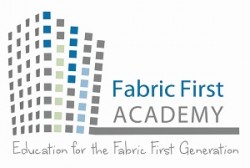The drive for greater thermal efficiency in the building of new homes has led to a new problem according to a survey and report published by the Zero Carbon Hub – namely overheating in homes.
Rob Pannell Managing Director of the Zero Carbon Hub and Mike Stevenson Development Director for offsite fenestration specialists Sidey and founding partner of the Fabric First Academy consider the implications.
“It might seem like an odd subject” says Rob, “considering that for years’ architects, designers and specifiers have all been pushing as hard as they can to deliver the most thermally efficient homes they can”.
“But the reality is that there is an estimated 20% of homes currently overheating with the potential for more in the future”.
“The implications to home owners of their buildings over-heating are numerous – it can have a very negative effect on their physical well-being as well as there being negative consequences for the physical structure and the individual components within it”.
“We are clearly now seeing homes with inside temperatures beyond those highlighted as comfortable in the government’s ‘Housing Health and Safety Ratings System’.
“It is perhaps an unforeseen consequence of the problems which architects and specifiers face when trying to include a suite of energy efficient products in their designs without necessarily having recourse to the information as to what the impacts of using them together will be”.
“It is an interesting story without a doubt” agrees Mike “like many other suppliers over the past few years we have constantly been tasked to provide ever more energy efficient products to the market”.
“In our role as a supplier over that time-frame though and in our role as a supporter of the Fabric First Academy which is designed to provide some of the much needed education to architects and specifiers, there is one thing that we have constantly championed – to be included from the outset as a part of the design team on major projects”.
“The issue of over-heating in homes simply reinforces our belief that we – and the other major suppliers to the fabric on a project need earlier involvement in the design process so that we can play a part in discussing the interface of materials and the effect of using certain products in combination with one another”.
“Particularly important is addressing the issue of air-tightness and the impact of it on the performance of the building when using certain materials and products”.
“Equally we have a role to play in advising about the ‘as built’ performance of products against ‘as claimed’ and what is needed to balance the effect they have on the overall energy footprint of a dwelling”.
“A big thing for us at the minute when designing windows is ventilation and the positive and necessary impact it has on the overall picture. So often the importance and the effect of ventilation is underestimated; it is increasingly important”.
“The same is true of glass specification and balancing the desire for large apertures with proper measures to counter solar gain (as well as u-value and acoustics). Indeed, this is one of the issues raised in the Zero Carbon Hub report”.
“The bottom line is that as with most things in life, prevention is better than cure, and working together with design teams is the surest way to ensure that the problem of over-heating does not occur in the first place”.
“It is a really valid point that Mike makes in terms of design team involvement and a proper assessment of the properties of products which are specified for use together” concludes Rob.
“It is incredibly important that those who are building homes, commercial bed space and in fact any building for occupation have a proper process in place to assess the impact of the products they choose and the potential for them to cause over-heating in buildings”.
“When we carried out the survey there were close to 40% of those who responded who did not have any process in place to assess the potential for over-heating, while many of the others relied on the experience of their staff to make a judgement rather than having a formal process”.
“Over-heating in homes is a real issue; it won’t go away by chance; it needs proper processes to ensure that it is designed out before the build process takes place”.
The full report along with other key documents from the Zero Carbon Hub can be downloaded from the Fabric First Academy website www.fabricfirstacademy.co.uk
More information on Sidey in the offsite market is available from www.kitfix.co.uk Zero Carbon Hub www.zerocarbonhub.org









